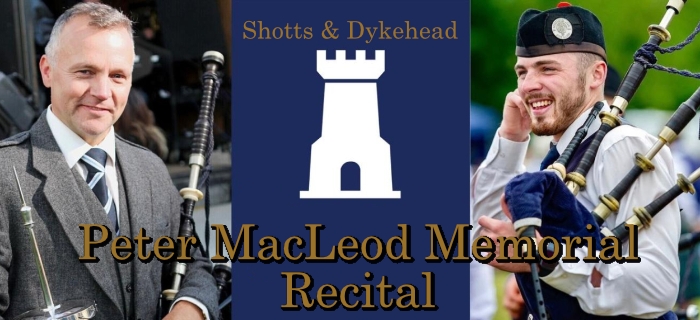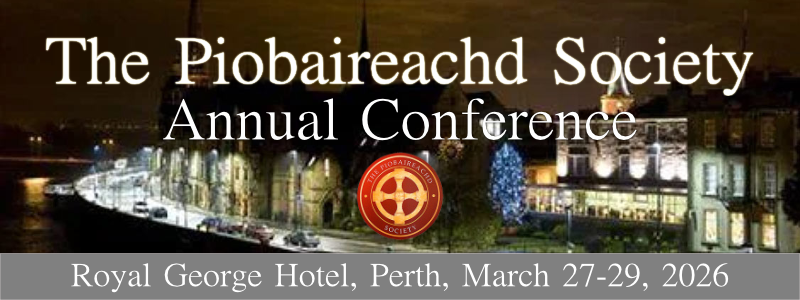
Some time ago a reader alerted me to what he termed the ‘California D throw’, the ‘light’ throw. He said that he had noticed how modern pipe bands and soloists seemed to opt for this style. The correspondent thought the ‘light’ throw ‘sounded tidier’ in bands but thought it lost ‘importance’ when played by a soloist.
By importance I took it that he meant impact or definition. He speculated: ‘Has the four note throw now gone the way of the taorluath with the ‘redundant’ A and the open C? I was taught the latter (a long time ago) and as soon as I joined a pipe band was instructed to play closed C. A number of years ago a very famous soloist won first prize playing a D grip with a D gracenote [instead of B] in his tune. Do you think our finger technique and execution are, like our language, changing and evolving and is it for the better or just a fact of piping life?’
Firstly I believe the very famous soloist to have been Donald MacPherson. I heard him do it on one occasion at the prestigious Scotway competition in Glasgow either 1989 or 1990. Why I don’t know. Donald had the most brilliant fingers of anyone I ever heard.
As I have written time without number, our music, and the technique used to perform it, has been refined and improved over time. We should, in my view, celebrate the refinement – the near extinction of the ‘heavy’ D throw from piobaireachd playing for example. I don’t know any of the top players today who use it in their ceol mor.
And with all due respect, because RU Brown played it (check out the ‘Masters of Piobaireachd’ series), it does not make it correct or pleasing on the ear. The extra low G gracenote in the throw is, like the extra gracenote in the ‘redundant A’ taorluath and crunluath, really only acceptable when played quickly, as it can be in light music.
In piobaireachd and slow airs it must be executed more slowly and as a result produces an ugly movement which does anything but grace the note that follows. The preferred throw – preferred because it is suitable played fast or slow – only sounds ‘light’ when fingered inaccurately. There must be a full low G, a good D gracenote to C (full D dropping immediately to C) before a finish on the D. A low G, D and then a light tap to C will not do – the same sequence but a world apart in sound and effect. Check out the media file for this movement in Bagpipe Tutor 1.
The ‘piobaireachd’ high A, high A, (F finger down), as played by former SFU P/M Terry Lee, has gone out of fashion too – though an F ‘down’ high A can make fingering slightly easier when going from ‘piobaireachd’ high G to high A in ceol mor.
As regards the open C, it is generally accepted that as the chanter pitch rose so it became necessary to adopt the closed fingering, little finger down. Test this by playing a tune like Rowan Tree with the open C. Every time you hit the note it usually sounds pretty flat, certainly on the modern chanter. Get one of those big, thick, comfortable sticks from 1900 or so and the difference, pinkie on or off, is less clear.
Another piece of technique hopefully heading for extinction is the low G taorluath and crunluath played with the D gracenote on low G instead of low A. I have heard this justified on the basis that there are two low Gs in every other taorluath so it follows that this rule must be followed when playing the movement from low G. Not if it sounds out of place it shouldn’t.
Put bluntly, it sounds really clunky but perhaps wouldn’t if the above dictat was followed accurately and the low G was timed the same as the two low Gs in the conventional taorluath or crunluath — as a demisemiquaver. It usually comes out as a semiquaver gracenote, hence the imbalance and unmusicallity of the movement.
I don’t know about California throws or other geographical preferences, but pipers should trust their ears. As Donald MacLeod said, if it sounds right, it generally is right. Because something was played a certain way many years ago is no reason to stick with it if something more pleasing is available.
[wds id=”11″]
















Being from California, I like the naming of the D throw I have played forever. Never heard it called that before. My teacher Jimmy Thomson, Original Pipe Major of the original LA Scots, was a student of blind Archie MacNeill. He said the heavy D throw was popularised by Blind Archies own Nephew (we all know who we are talking about) because of his difficulties playing a proper D throw (Strong low G, D gracenote to C and lift up the D finger) in his light music.
look at your old Logans tutors, It offers alternative ways to play a D throw, none of which includes a redundant low G
I love the phrace “which does anything but grace the note that follows”. This is exactly what is happening. Some pipebands allow members to “cheat” and play notes the easy way. And this is the way piping is moving. Young people are getting less and less dedicated with stuff. They want to play, and they want to play fast. Why scare them away by letting the student practice a gracenote that cant even be heard in a parade or concert. Remember, there are thusands of pipers who never compete. They play tons of jobs, pleasing thousands of people and this can be done an easy way. Let the pipers who compete be masters of gracenotes. I have been busking the streets of Edinburgh. No turist ever tolled me, that my Throw on D was light. They just enjoyed the pipes.
Henrik, Hi. No, I’m sorry, I disagree entirely. No student starting out knows where he will end up playing. Being able to execute a basic movement is really important and has to be learned right at the start. I have lived in Edinburgh for over 40 years and I have heard some pretty dire performances by buskers attempting to play pipes. It does nothing for the global reputation of the pipes if tourists hear (as they often do) a dreadful cacophony – they get the impression that that is what pipes are supposed to sound like. I’ve often thought that busking with pipes on the streets of Edinburgh should be banned unless the busker has a certificate, the issue of which would require a minimum standard of ability a “buskers exam” if you like. How this might be accomplished is a matter for a different discussion. This standard need not be particularly high, but should at the very least include the ability to get the instrument reasonably well in tune, with a reasonable fingering technique. To be clear, I’m absolutely NOT against buskers in Scotland’s capital city, but noise pollution is not good!! Would a Hardanger fiddler be happy hearing someone playing an out-of-tune fiddle with bad technique on the streets of Oslo, Copenhagen, Stockholm or Helsinki? (Sorry Henrik, I mention these capitals as I don’t know where you are originally from).
Hello, Tom Lewin
Happy new year
Thanks for your intervention, I absolutly agree with you, there so many bad pipers unable to tune tune right and who play with fancy fingering, I also against that bad music
I’m dwelling in France, have been playing the GHB for 50 years, used to play in bagad when I dwelled in Brittany, used to compete in solo and played in pipe bands, and to finish with, I’v taught the GBH since 1997,I’m intolerant about bad piping, for that reason, in 2010, I gave up teaching near guys in the town of Grenoble beacuase I didna want to be identified to them, I hold the GHB and its background in high respect and refuse to give cherries to the pigs
I perhaps be hold as a snob, that I’m not but without to be an elitist, I require my pupils to follow the right path, the GHB is a demanding instrument and for that reason , has to be deserved
Nice to read about people who dare openly talk about the bad piping
All the best tae ye, fellow
I have felt for years that some gracings are too heavy and get in the way of the flow of the tune. I have never mentioned this before as nobody would pay any attention to my unqualified opinion. I feel slightly reassured.
I listened to Mr MacGillivary at the Seniors in Oban this year and enjoyed the rich and round shape of his tune. He didn’t feature in the prizes.
Hello Bob
Either I’m mistaken, or in the taorluath and crunluath on G, e.g in ” Beloved Scotland ”
the D gracenote was played on G and not on A …
I remember like it was yesterday, Dugald B. Mac Neill
( during a teaching session at the C.O.P ) telling me that the crunluath on low G was to be played with a D gracenote on G and not on A, moreover, it is written down as such in the Kilberry’s, even if , from that I know , Archie Campbell was not right on all plans
So, tell me which is the best
Thank you in advance
This is different movement Jean Michel – a closed crunluath on low G where all gracenotes including those on E and F are played to the low G.
Bob
Sorry, but I certainly miss Something of your meanings
I wanted to mean a crunluath ON low G so, using D-E-F gracenotes on it
as in ” beloved scotland “, so, a closed crunluath on Low G ?, no ?
Or do you mean a Crunluath FROM Low G to A ?
then D on Low G and E-F on A ? ( as in ” Flame of wrath ” )
Could you illustrate WITH NOTES, the movement you talk about ?
Thank you
Beloved Scotland has a closed crunluath on low G whereby all gracenotes are played to that note. The standard crunluath from low G should have the D gracenote on low A and the same for the E and F. RW